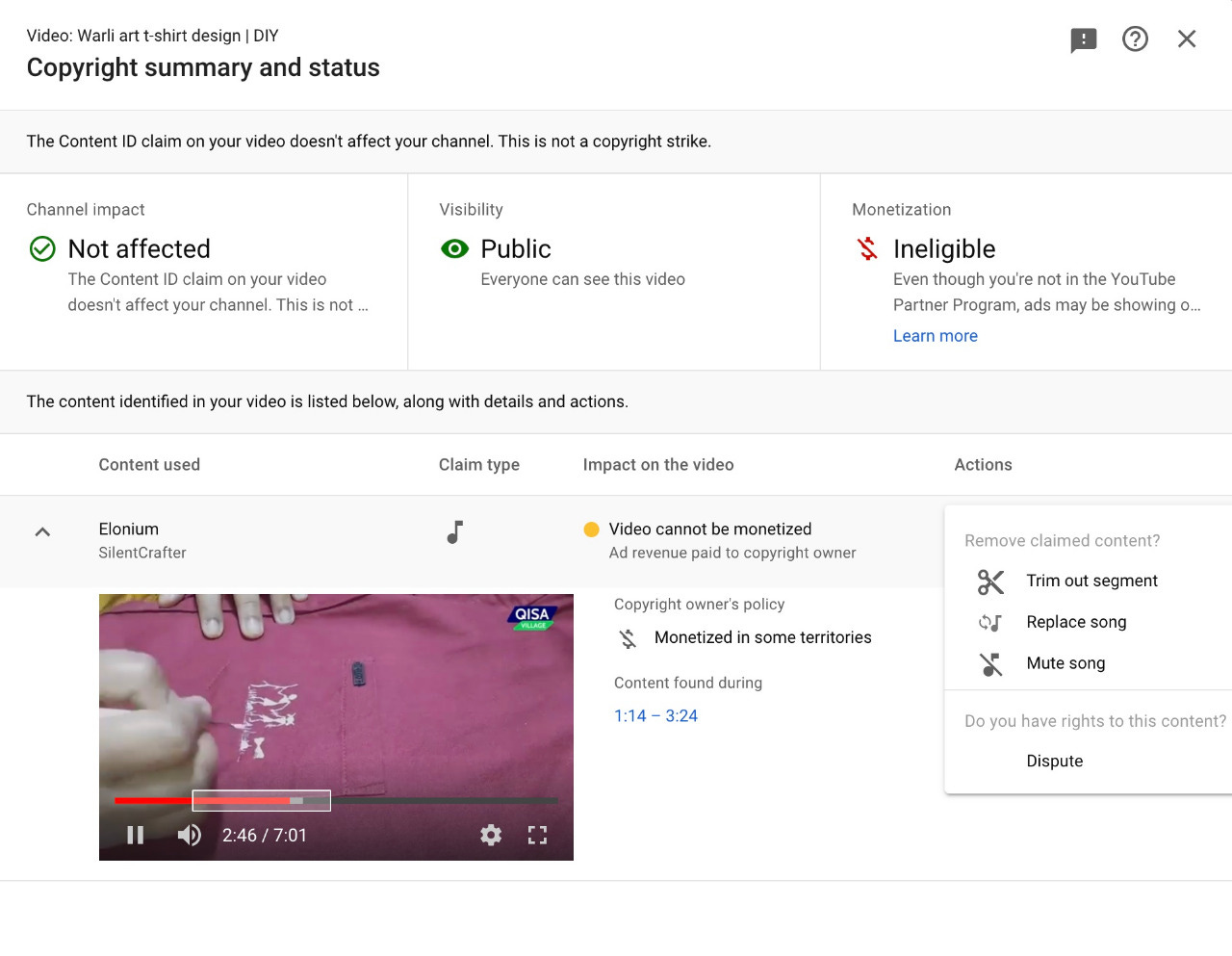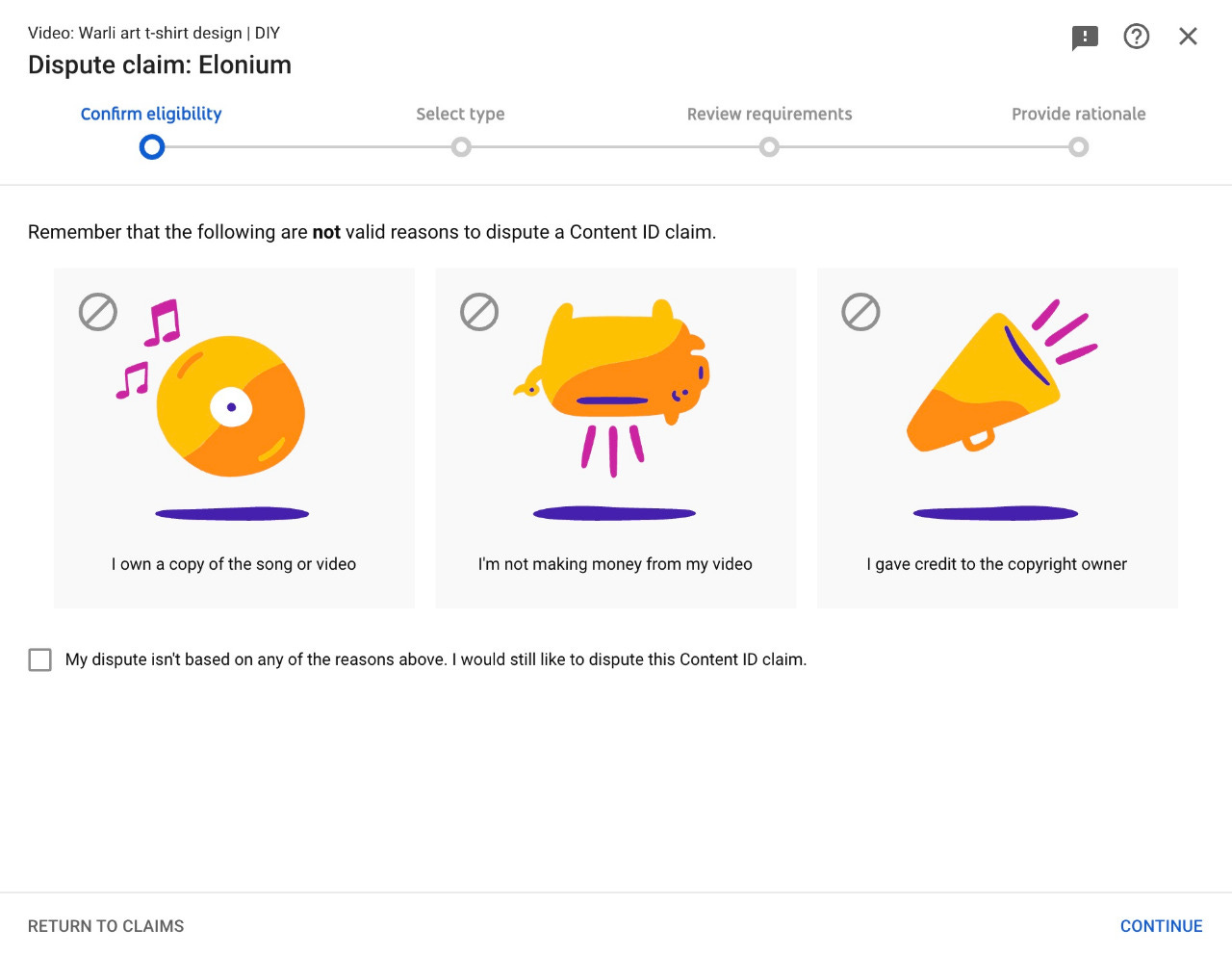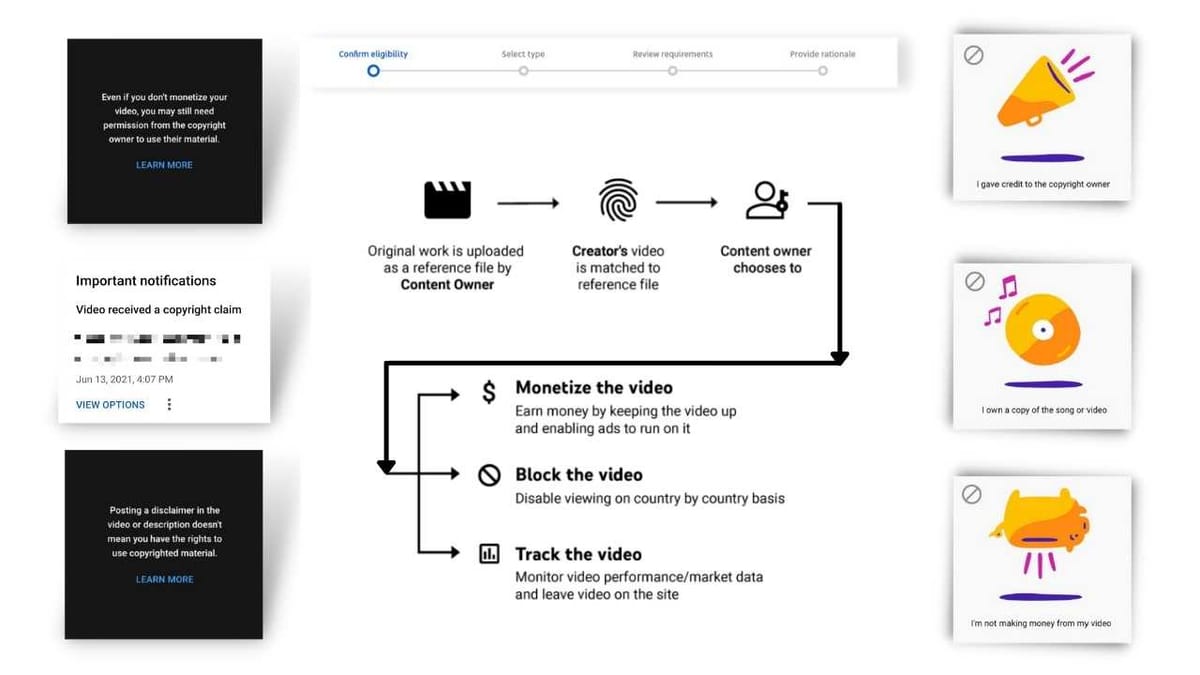The worldwide web is constantly shrinking the physical world into an easily accessible nugget. Content creators across the globe are now privy to each other's work, have the option to collaborate over the net, and share opportunities. But this means that resources are freely accessible too. And given how laws work within the territorial boundaries, it gets tricky to assert rules and regulations over the internet, especially when it comes to copyrights.
Copyright is the right of the creator (or the copyright owner like a record label) on original content. Through effective mechanisms, platforms like YouTube try to safeguard the interest of creators, so no one ends up earning illegally or unauthorizedly using things created by others. Copyright applies to static images, videos and audio files.
When making content, creators might use others' elements from the internet—such as a soundtrack, an image downloaded from Google, a snippet of a video—and, if you don't have the right to use them, you can attract a copyright claim on YouTube.
Copyright Claim on YouTube
Also known as Content ID Claims, YouTube has an automated process to flag every new upload if it uses copyrighted media. It is YouTube's internal process that helps creators keep a vigil on their content. If a copyright holder has access to the Content ID tool, the initial process is automated and often doesn't need any human intervention. It raises a flag on the individual piece of content and notifies both parties—the copyright holder and the other user.
But what does a copyright claim mean?
Copyright claim (or Content ID claim) means that the YouTube algorithm has found that you have used a media you may not have the right to use. But it does not imply that it will lead to the removal of your content or that your channel is getting struck down.
With a copyright claim, the copyright holder has three options:
- They can choose to let YouTube run ads on that video and take revenue from it
- Disable the video in select regions
- Monitor the video and use the data for analysis and marketing purposes.

The copyright holder can also choose to ignore your video, but that is a probability you should never bank on.
What can you do about a Copyright Claim?
You can dispute it. If—and only if—you are sure that everything in your video is either created/owned by you, downloaded from authorized sources, or falls under the fair use policy.
[Read: Where to Get Copyright Free Images, Video, Music]
Once you dispute a claim, the copyright owner is notified and has 30 days to respond. They can either release the claim (if they agree with your dispute) or reinstate the claim (if they don't agree with your dispute and still think you are using their content). Another step ahead, they can also file for your video to be taken down (which is called a copyright strike). Or they can choose to do nothing and let the claim expire.
Besides the dispute process, YouTube gives you some quick options to deal with it, like snipping out that bit, choosing an alternate track to remedy the situation.

Copyright Claim: Some things to keep in mind
Always use media with proper permissions. Don't leave it to chance. Algorithms don't sleep.
You may believe that having a copy, not using it for money, or attributing the original creator is enough ground for disputing a claim. It is not.

If you want YouTube to monitor unfair use of your content, you'll have to qualify for Content ID and sign an agreement. It is not available to all creators by default.
Copyright claim does not affect your channel, only that piece of content that is flagged.
A copyright claim can lead to a copyright strike — a complete and valid legal takedown request.
Just like copyright claims, strikes have consequences too. After your first strike, you'll be required to go through the "Copyright School" course aimed to help you understand the regulations better. Additionally, you might lose the ability to go live or monetise your videos. And after 3 copyright strikes, you might lose your channel, all the videos on it and the ability to start a new channel.

The Logical Indian is looking for a Video Journalist:
Experience: 0-2 years of experience in video production (writing video scripts, editing video and recording/producing video contents in all consumable digital media formats).
A knack to find out stories and having the ability to tell a story through digital media in the form of video is a must for this role.
Technical skills required: Adobe Photoshop, Canva, Adobe Premiere Pro.
If you find yourself suitable for the role, you may fill in this form.
Times Internet is looking for an English Voice-Over Artist (NON News):
Experience: 1-3 years
Position: Remote/Freelancer
The candidate must have experience doing voice-overs in English, writing scripts, and should be comfortable in a freelance position.
Interested candidates can share their CV at sweta.mohanty@timesinternet.in (Please add “English VO Artist” in the subject line).
ABOUT THIS NEWSLETTER
This newsletter is an attempt to keep up and share all the latest and greatest stories in media and how they get done. Read about it here: About In Old News-Letter. And if you were forwarded this newsletter, here’s how you can sign up to get the latest editions as they come out!

